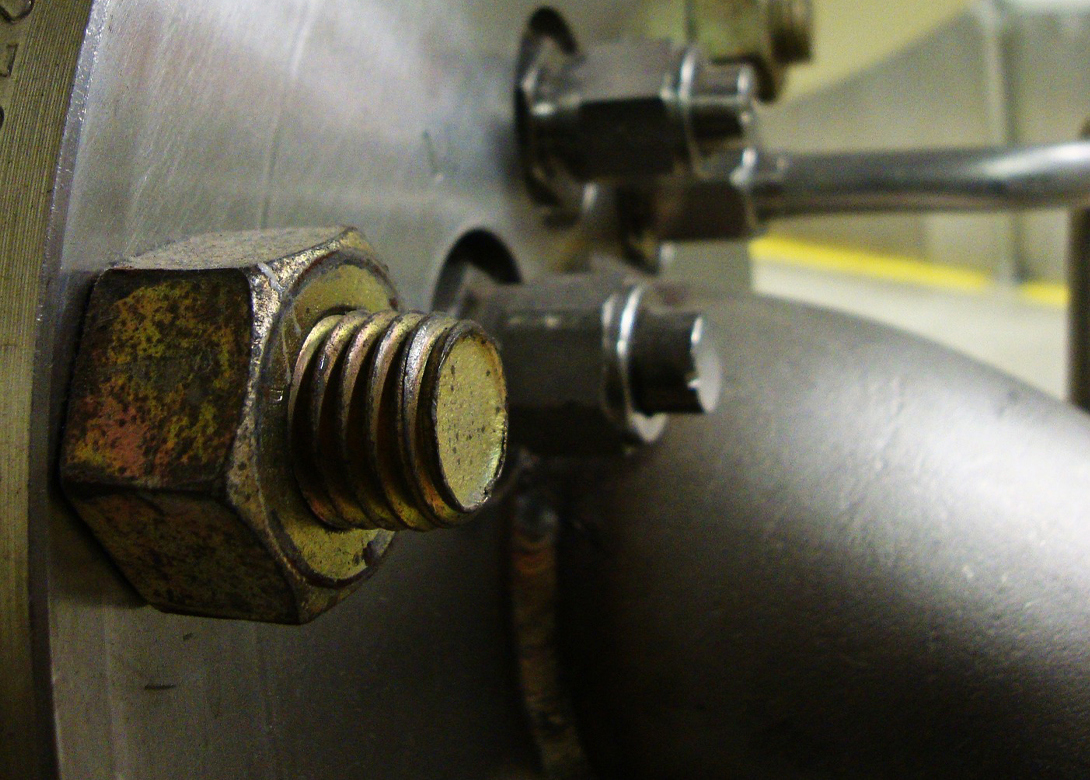
Here, in the next of his series of informative articles, Bill Eccles from Bolt Science answers a common question regarding how much a bolt thread should protrude past a nut.
There are some building codes that stipulate that there must be at least one thread protruding through the nut. However it is common practice to specify that at least one thread pitch must protrude across a range of industries. Typically the first few pitches of the thread can be only partially formed because of a chamfer etc. For example, the standard BS EN ISO 4014 (hexagon head bolts - product grades A and B) states that the last two threads on the end of a bolt may be incomplete.
Nut thickness standards have been drawn up on the basis that the bolt will always sustain tensile fracture before the nut will strip. If the bolt breaks on tightening, it is obvious that a replacement is required. Thread stripping tends to be gradual in nature. If the thread stripping mode can occur, assemblies may enter into service which are partially failed, this may have disastrous consequences. Hence, the potential of thread stripping of both the internal and external threads must be avoided if a reliable design is to be achieved.
When specifying nuts and bolts it must always be ensured that the appropriate grade of nut is matched to the bolt grade. Having the top of the bolt thread flush with the nut results in the chamfer being present within the nut reducing the thread shear area and hence the stripping strength. Having the bolt in this condition is sometimes referred to as 'short bolting'. For more details click here.
In the US, the term ‘bolt stickout’ is used which is the amount of thread sticking out beyond the face of the nut after tightening. The RCSC Specification requires that the end of the bolt be at least flush with the face of the nut. It is not permitted for the bolt end to be below the face of the nut after tightening is completed. There is no maximum stickout by specification, but excessive stickout indicates that the nut may have met the thread runout. If this has occurred, pretensioning is questionable for the calibrated wrench and twist-off bolting methods because the nut would cease rotation and the torque would become very high, although the bolt would remain loose. For the turn-of-nut method, the required turns could not be applied. For the direct tension indicator (DTI) method, the DTI gap requirements could not be achieved.
In cases of when a threaded fastener is tapped into a plate or a block it is usually the case that the fastener and block materials will be of different strengths. If the criteria is adopted that the bolt must sustain tensile fracture before the female thread strips, the length of thread engagement required can be excessive and can become unrealistic for low strength plate/block materials. Tolerances and pitch errors between the threads can make the engagement of long threads problematical. In summary the full height of the nut is to be used if you are to avoid thread stripping. Have a look at information on the website on the BOLTCALC program and thread stripping - there is a tutorial/presentation available from the website.
In terms of maximum protrusion I have not come across any guidelines on this point other than minimising to avoid wasting material.

Having spent a decade in the fastener industry experiencing every facet – from steel mills, fastener manufacturers, wholesalers, distributors, as well as machinery builders and plating + coating companies, Claire has developed an in-depth knowledge of all things fasteners.
Alongside visiting numerous companies, exhibitions and conferences around the world, Claire has also interviewed high profile figures – focusing on key topics impacting the sector and making sure readers stay up to date with the latest developments within the industry.





